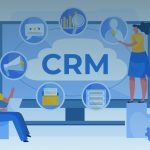It’s no secret that advertising is essential but expensive. Getting a good return on investment is critical and is one of the most essential metrics for anyone investing in social media ads. As a marketer or business owner, you can’t afford to keep spending money on ads without seeing a significant return.
But audiences have little incentive to click on ads that want to sell. And it’s hard to convince people to buy when they’re bombarded by ads all the time. So, how do you stand out?
Fortunately, there are powerful and effective marketing approaches to improve your ad performance. And this post is all about showing you what those approaches are.
Today, people seek personalization and meaningful connections from social media content – and that includes your ads. If you want to make meaningful and high-return ads, you need to use the tactic of niching down. This is where you avoid focusing on broad and generalized audiences. And find smaller and specific groups to target.
Let’s dive in and look at practical ways to niche down for your Facebook ads – especially by focusing on demographics.
Table of Contents:
- Build Ads for Different ‘Personas’
- Use Facebook’s Lookalike Audiences
- Use Facebook’s ‘Interests’
- Leverage ‘Behaviors’
- Target Specific Locations
- Leverage Life Events
- Niche Down on B2B Audience Members
- How to Optimize your Ads
Build Ads for Different ‘Personas’
Many businesses try to reach as many people as possible when creating ads. But in doing so, the ads feel impersonal and irrelevant.
Niche down your ad strategy by identifying and targeting different groups of people with different ads. You can do this by building buyer personas for your product.
A persona is a representation of your ideal customer, including demographics, interests, and needs. It’s based on a mixture of fictional characteristics and real features derived from existing customers.
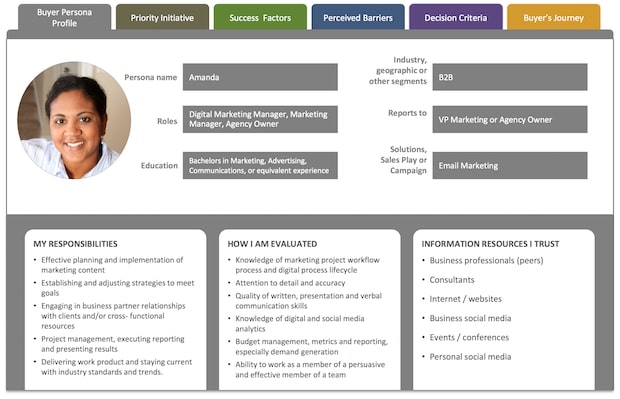
Creating these personas ensures that your ad content is relevant to the people you’re targeting. It also allows you to segment your audience so you can show them different ads that are more likely to convert.
Your ad copy, images, and call-to-action should all be tailored to each persona.
For example, if you’re selling shoes, then you could create tailored messages for:
- Women
- Hikers
- Joggers
And so on. The more specific your target audience and messages are, the more effective they’ll be.
Here’s a neat tip. Go to Google and type in ‘shoes for’ or your product and ‘for’ and check out the autocomplete suggestions that appear.

You’ll get several ideas for ways to ‘niche down’ the audience you target.
If you want to take it a step further, enter different alphabet letters for more ideas. Here’s one where I typed ‘shoes for c…’
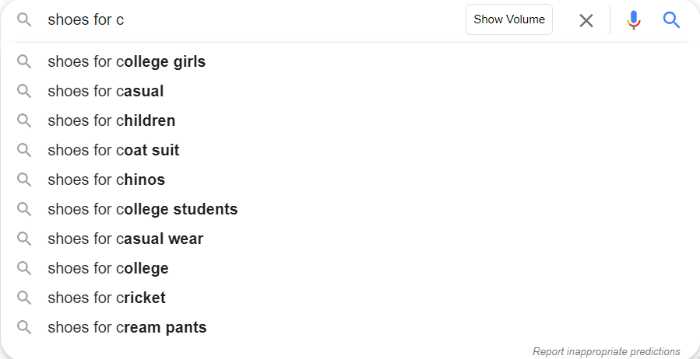
You’ll get many ideas for ways to find specific audiences.
Use Facebook’s Lookalike Audiences
Once you’ve built your personas, it’s time to find them on social media.
Facebook has a great tool for this called Lookalike Audiences. It works by identifying your existing customers who are on Facebook using website traffic, engagement, app activity, and customer lists, including identifiers like email addresses.
With such data, you get a ‘Custom Audience,’ and this forms the source of Lookalike Audiences.
Facebook helps you find people who are similar to your existing customers, aka ‘lookalikes’.
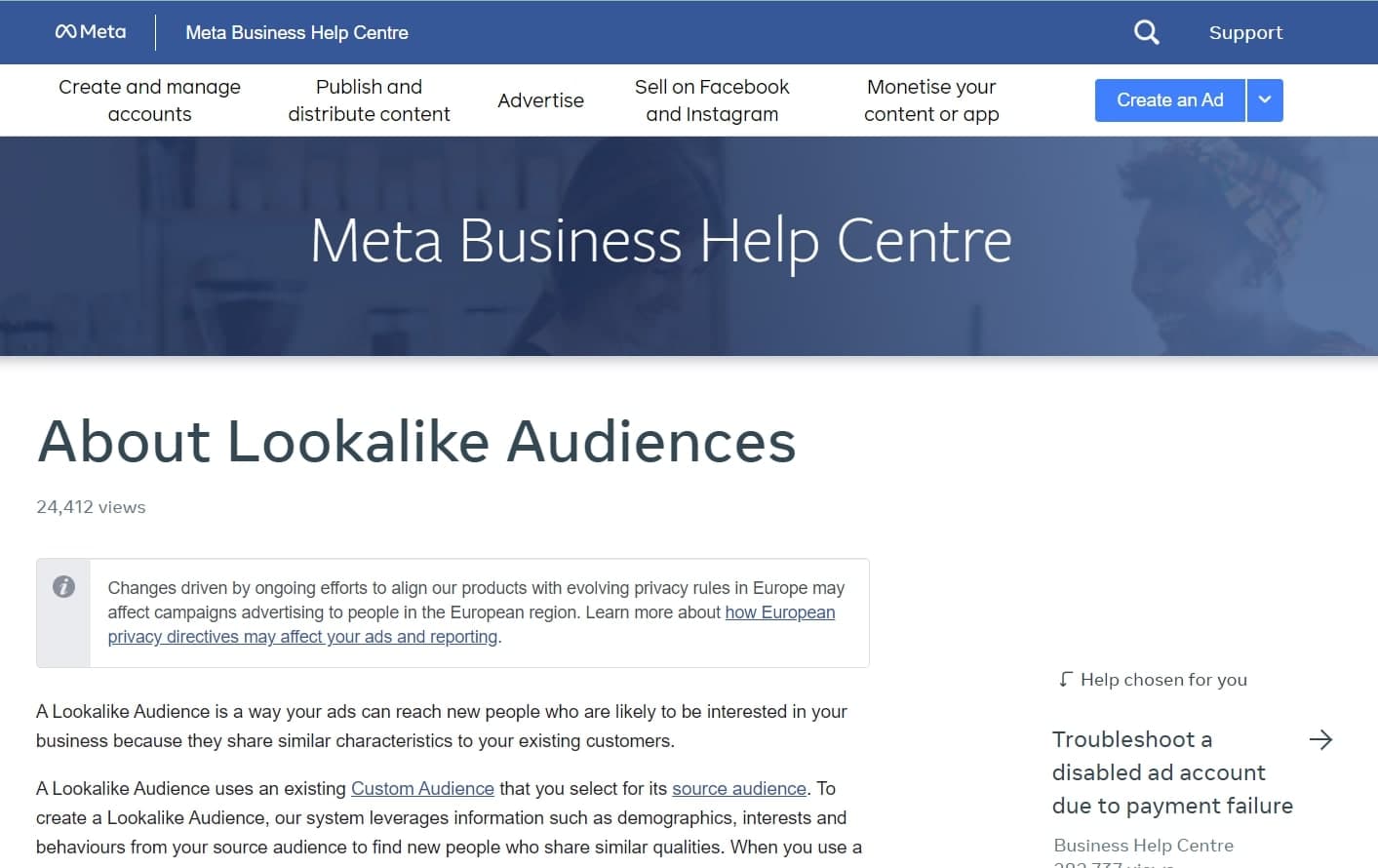
In this way, your ads can target people with similar interests and demographic characteristics to those who already buy from you. It’s a great way to find new customers who are likely to convert. You leverage your demographic data to discover new people like your best customers.
This is a smart way to use existing data while leveraging the powerful business tools that Facebook provides. Once you have your Lookalike Audience, you can start creating ads that are relevant to them. Remember to keep your persona in mind when creating the ad copy, image, and call-to-action.
Use Facebook’s ‘Interests’
While Facebook defines Interests as a separate factor from Demographics when defining audiences, I like to consider it a powerful way to refine who you target. The reason is that when you use interests to target people, you still use demographic information.
The key to using Interests well and finding specific niches is to go several levels down when detailing your audience.
For example, if you’re targeting people in the Fitness and wellness sphere, go further and choose interests like ‘Yoga’ or ‘Bodybuilding’. While such groups have diversity, specific demographics like gender and age tend to be prominent. For example, people interested in bodybuilding are more likely to be male.
Similarly, people who have Yacht clubs as an interest can be suitable audience targets for high-end products. Just make sure you’re creative and specific when you focus on Interests as a way to define your audience.
Leverage ‘Behaviors’
Like ‘Interests,’ the Behaviors category can also help you niche down on a specific demographic – if you’re clever about it.
For example, when defining your audience, you could opt to focus on ‘audiences in Mexico that prefer high-value goods’ versus those that prefer ‘mid- and high-value goods’.
This is a specific example, but it’s worth exploring the different options available under Behaviors to find specific audience members.
Target Specific Locations
Location can be a great way to niche down on your audience and create more personalized ads.
Facebook allows you to target different audience types based on location:
- People living in or recently in a specific location
- People living in a location
- People recently within a particular location
- People traveling through a location
What’s great is that Facebook doesn’t just ask you to select a location and target anyone who appears to be around there. The settings are refined so that you can create messages for different situations that revolve around a location. Let’s look at a few examples for clarity.
People living in or recently around a specific location
You’re aiming at a general group when you target an ad to reach people recently around a location and those living there. The focus here is that they’re at a specific location.
This setting is useful when there’s a major event taking place. For example, a sports tournament, a play, a parade, or a conference.
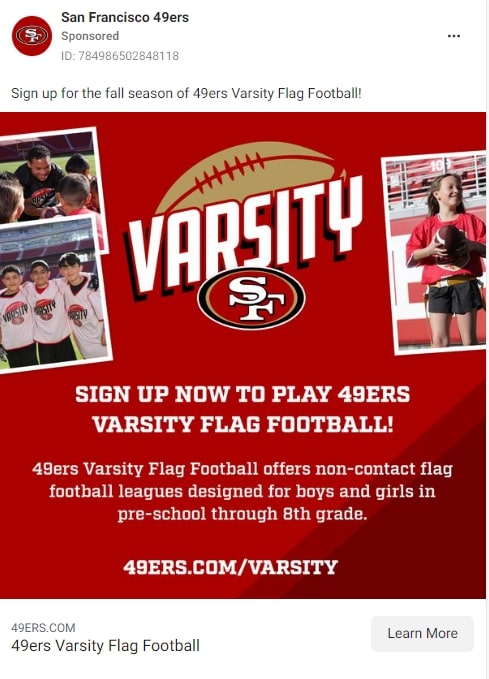
You can create ads that go live at a specific time so that it reaches everyone who are at a sports game, a festival or some other event. Just create an offer that piques their interest.
People living in a location
You can target ads for people living in a particular city or region. This doesn’t include people passing by or who recently visited the area. This is useful for local businesses like mom-and-pop stores, local service centers, and others that rely on a community for business.
If you want to build a relationship with your community and get regular customers, then create ads that focus on ease of access, i.e. ‘We’re the only store in town that sells XYZ product’ or community ‘Proud to be a part of the community’ or something along those lines.
You should focus on brand awareness to get long-term customers and make your business memorable.
People recently within a particular location
You can target ads for people who have recently visited a place. This includes people who tag themselves in a specific place like an airport, parks, or any other type of landmark.
This is useful if you want to target people on vacation and looking for things to do. It’s also a way to reach people around your store or street at a specific period. For example, if you want to advertise a sale that’s happening in your store.
You can also use this to target people who have visited competitor stores.
People traveling through a location
Facebook can identify audience members away from home – roughly 125 miles from where they live. And you can target them through ads for services like restaurants, hotels, and other businesses that serve travelers.
This is useful if you want to target people who are on vacation and need to rent a car, get storage facilities, or similar services.
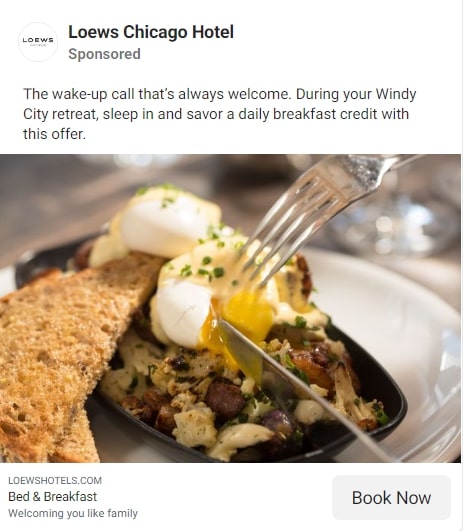
Example of a Facebook Ad by Loews targeting visitors to Chicago
The takeaway is that you can use Facebook’s location-based targeting to create ads that target specific audiences in different locations. This is a great way to create more personalized ads and improve your conversion rates.
Leverage Life Events
Facebook offers advanced demographic targeting based on life events.
You can use this feature to promote your ad around people’s birthdays, anniversaries, and even if they move to a different location.
You can target people who start a new job or move away from home to a new city or town. And you can focus on newlyweds and newly engaged people.

People who set their status to ‘Engaged’ in Orlando and Tampa Bay could start seeing ads like this one.
It really has you thinking about how much information social media has about us.
Remember to make sure that you focus on creating relevant ads and matching them to specific events. Such specific targeting means that you need to put in a lot of effort to craft meaningful messages for each segment. But the result is worth it because you’ll have a much higher conversion rate.
Think about it, if a Facebook user has a friend whose birthday is approaching, they’ll be more likely to click on an ad for flowers and gift deliveries. If someone has just moved, they might be more interested in furniture and home decor ads.
You get the idea.
Niche Down on B2B Audience Members
One of the biggest misconceptions out there is that Facebook isn’t a good platform for finding B2B leads.
But that’s not true!
You can use Facebook to target employers and individuals in specific industries with your ads. And if you combine factors like household income with industry, you can increase the likelihood of getting your ad before critical B2B professionals.
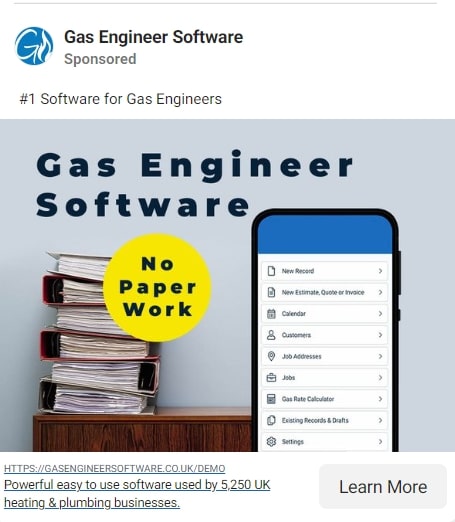
An ad for heating and plumbing professionals for software. This shows that you can target specific B2B groups.
When creating your ad, build your target audience and include ‘Employers’. Or you could focus on Industries and target areas as specific as ‘Food and restaurants’ and ‘Architecture and Engineering’.
You can even create ads and target people with specific job titles.
When you focus on such a specific target audience, you immediately narrow down the number of people you can reach. However, the benefit is that the right people will see your ad.
And this has several benefits for your business that goes beyond driving instant conversions. When relevant people see your ads, it builds brand awareness and helps you establish your business as an authority in your industry.
This is how you can use Facebook’s amazing targeting features to go beyond generic audience groups to make impactful ads.
How to Optimize your Ads
Once you’ve identified your audience and created your messages, you may think you’re ready to go live with your ad campaigns. You almost are – but there are other important factors that go into making your ads effective.
Let’s cover a few critical tips on optimizing your ads so that you can get the most out of your campaigns!
Choose the right format
The first thing you need to do is to make sure that you’re using the right format for your ad. Your ad format will depend on your business goals and what you’re trying to achieve with your campaign.
For example, if you want to drive traffic to your website, you could create an image-based add that goes to a landing page when people click on it. Or if you want to build brand awareness, then a creative behind-the-scenes video will appeal to people and build goodwill.
It’s a good idea to try out different ad formats to see which ones work best for your business. Don’t be afraid to get creative and experiment
Optimize your calls to action
Your call to action is one of the most important elements of your ad. It’s what tells people what they should do to benefit from the message your ad shares.
And if your call to action isn’t effective, then people won’t take the desired action.
The big mistake that brands make is creating a generic call to action like ‘Click Here’ or ‘Submit Your Email’.
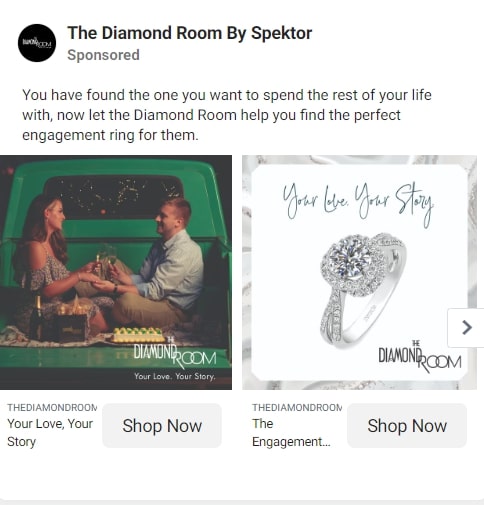
A call to action should encourage users to take action that meets your goals.
You need to create a descriptive call to action that specifically tells people what you want them to do. For example, ‘Download Our App’ or ‘Get Access to Exclusive Content’. Such specific and descriptive calls to action are much more effective in getting people to take the desired action.
Create landing pages
Your ad isn’t enough to achieve goals such as building your email list or selling products.
When people click on an ad, they’re usually taken to a landing page where they get further information. A landing page needs to continue the conversation that your ad started.
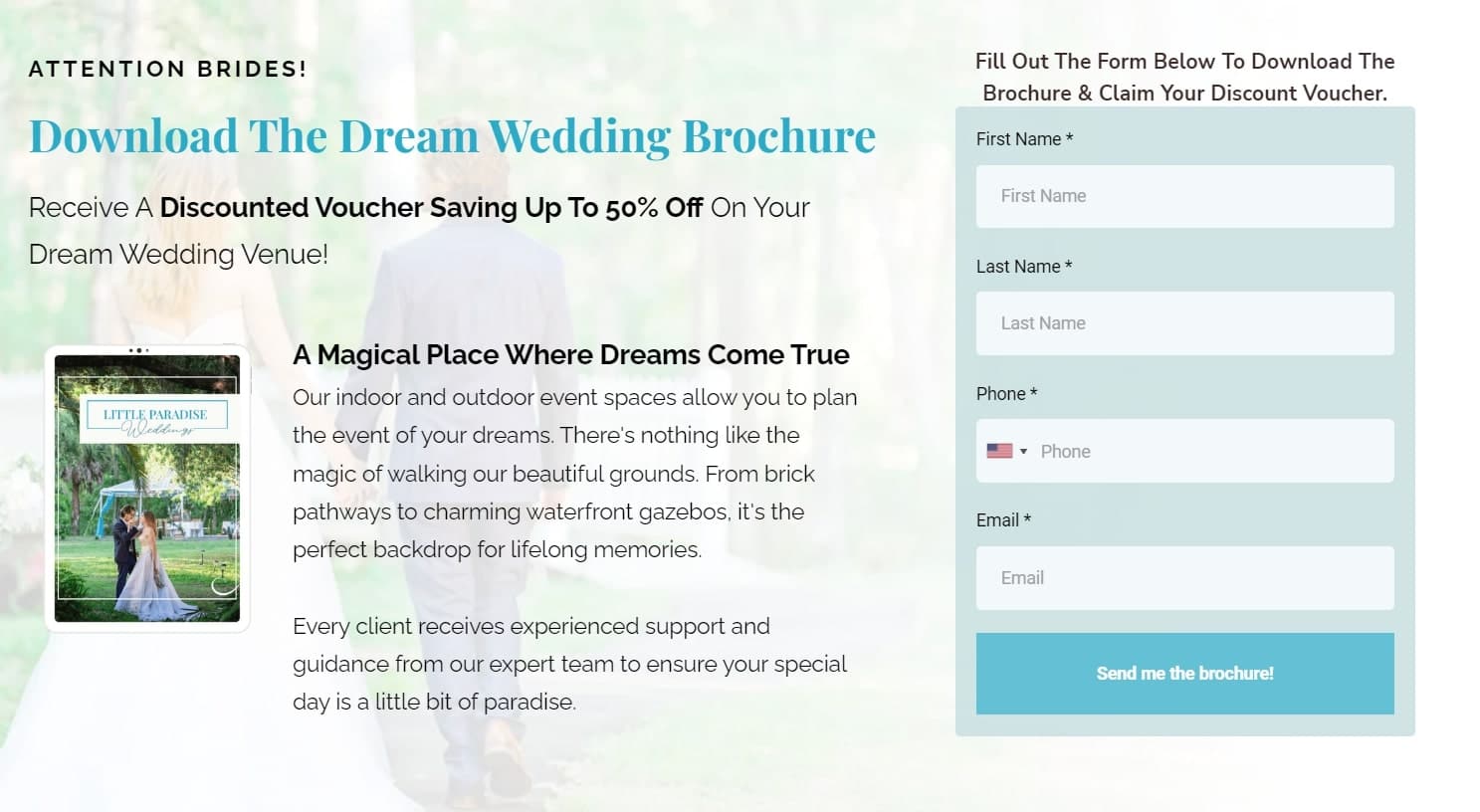
Clicking on the ad for wedding venues in Orlando takes you to this landing page. Potential customers can download a brochure and get a discount by entering their details.
It needs to be well-designed and have a clear call to action. And it needs to have a well-written copy that convinces users to submit their email, buy a product, follow you on social media, or do something else. And if your landing page doesn’t do the job, add an opt-in popup to capture your user’s email before they leave.
Carry out split testing
No matter how many best practices you follow, there’s no guarantee that your ads will perform well. Every business is unique and your audience and their needs will be unique too.
It’s vital to carry out split testing or A/B testing so that you can optimize your ads. Make minor changes to every element of your ad – from the headline to the images and text.
Facebook allows you the option to carry out split testing from the platform itself. You can add variations of your ads to your campaign.
And Facebook will display different versions to your audience. You’ll get reports that give you clear information on which ads work best, making optimizing your ads easier.
Over to you
We’ve just covered everything you need to do to create highly effective Facebook ads.
Remember, the key is to be specific in who you’re targeting and to leverage the many options Facebook provides.
By following the tips in this post, you’ll be able to create ads that achieve your business goals while connecting with the right audience for you. So, get creative and grow your business with the best-performing ads.
Make your Facebook posts more effective with the Facebook Post Generator. This amazing tool helps you craft the perfect message for your audience and maximize engagement with your posts.




